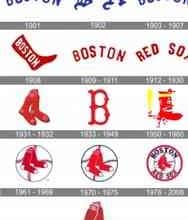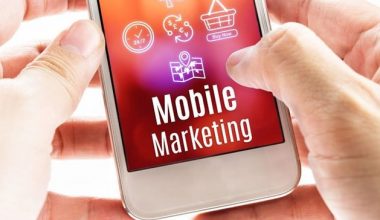When it comes to creating a successful personal brand, it is important to understand the different types of personal brands, the three aspects of your personal brand, the five A’s of personal branding, and the four pillars of a personal brand. But, if you’re looking for inspiration, personal brand examples can help you get an idea of what other successful brands look like. In this article, we’ll be looking at some of the best personal brand examples for leaders and students, as well as how to create your own unique personal brand.
What is a Personal Brand?
A personal brand is a unique combination of skills, experiences, and values that define who you are and how you present yourself to the world. It’s how you make yourself stand out from the competition and how you create a lasting presence in the minds of your target audience. Your personal brand is a reflection of your values, and it is important to create a brand that is authentic and true to who you are.
Your personal brand can be a powerful tool for marketing yourself and your business, and it can be used to create meaningful connections with your audience. It is also a great way to differentiate yourself from the competition and establish yourself as a leader in your field.
What are the 6 Personal Branding Types?
There are six types of personal branding:
- Storytelling: This type of personal branding involves telling stories about yourself and your experiences to create an emotional connection with your target audience.
- Brand Identity: This type of personal branding involves creating a strong visual identity that reflects your values and personality.
- Thought Leadership: This type of personal branding involves demonstrating your expertise in your field and showing that you are a leader in your industry.
- Networking: This type of personal branding involves building relationships with influencers and other professionals in your industry to grow your reputation.
- Content Creation: This type of personal branding involves creating content that is relevant to your audience and that demonstrates your expertise.
- Public Speaking: This type of personal branding involves speaking at events or conferences to build your reputation and establish yourself as an expert in your field.
What are the Three Aspects of Your Personal Brand?
When it comes to creating your personal brand, there are three key aspects to consider:
- Your Logo: Your logo is the visual representation of your brand and should be recognizable, memorable, and professional.
- Your Content: Your content should be relevant to your target audience and should demonstrate your expertise and values.
- Your Story: Your story should be authentic and should reflect your values and experiences.
What are the 5 A’s of Personal Branding?
The 5 A’s of personal branding are Awareness, Authenticity, Appearance, Attitude, and Action.
- Awareness: Awareness is about understanding how you want to be seen by your target audience and what message you want to convey.
- Authenticity: Authenticity is about being true to yourself and your values and creating a personal brand that reflects who you are.
- Appearance: Appearance is about creating a professional look and feel for your brand and making sure that your visuals are consistent.
- Attitude: Attitude is about having the right attitude and mindset. It’s about having the confidence to take risks and having the courage to pursue your goals.
- Action: Action is about taking action and putting in the work to make your personal brand successful.
How to Create a Unique Personal Brand
Creating a unique personal brand is essential if you want to stand out from the competition and make a lasting impression on your target audience. Here are some tips to help you create a unique personal brand:
- Know Yourself: The first step to creating a unique personal brand is to understand who you are and what makes you unique. Take the time to reflect on your values, skills, and experiences and how they can be used to create a unique brand.
- Know Your Audience: It’s important to have a clear understanding of who your target audience is and what they are looking for. Knowing your audience will help you create content that is relevant and resonates with them.
- Be Consistent: Consistency is key when it comes to creating a unique personal brand. Make sure that your visuals and content are consistent so that your audience can recognize and remember your brand.
- Take Risks: Taking risks is an important part of creating a unique personal brand. Don’t be afraid to try new things and experiment with different ideas.
- Connect with Your Audience: Connecting with your audience is essential if you want to create a successful personal brand. Take the time to engage with your audience and build meaningful relationships.
How to Write a Personal Brand Statement
A personal brand statement is a concise, memorable phrase that sums up who you are and what you do. It should represent your values, skills, and experiences and should be used to help you stand out from the competition. Here are some tips to help you write a personal brand statement:
- Keep It Short and Simple: Your personal brand statement should be short and to the point. Try to keep it under 15 words.
- Be Unique: Your personal brand statement should be unique and should represent who you are and what you do. Try to use words that are unique to you and that will help you stand out from the competition.
- Be Authentic: Your personal brand statement should be authentic and should reflect your values and experiences. Make sure that your statement is true to who you are.
- Use Powerful Language: Make sure to use powerful language that will make an impact on your audience. Use words that will evoke emotion and that will make your statement memorable.
- Get Feedback: Get feedback from your friends, family, and colleagues to make sure that your personal brand statement is effective and resonates with your audience.
What are the 4 Pillars of a Personal Brand?
The four pillars of a personal brand are visibility, credibility, network, and reputation.
- Visibility: Visibility is about making sure that your brand is seen by your target audience. This can be done through content marketing, social media, and other marketing strategies.
- Credibility: Credibility is about demonstrating your expertise in your field and showing that you are a leader in your industry. This can be done through content creation, speaking engagements, and other strategies.
- Network: Networking is about building relationships with influencers and other professionals in your industry to grow your reputation.
- Reputation: Reputation is about building a positive reputation for your brand and making sure that your audience trusts your brand. This can be done through customer service, social media, and other strategies.
Personal Brand Examples for Leaders
There are many successful personal brands for leaders that can serve as inspiration for creating your own. Here are some of the best personal brand examples for leaders:
- Facebook CEO Mark Zuckerberg: Mark Zuckerberg has created a strong personal brand by demonstrating his expertise in technology and showing that he is a leader in the industry.
- Microsoft CEO Satya Nadella: Satya Nadella has created a strong personal brand by showing his commitment to innovation and demonstrating his expertise in the technology industry.
- Apple CEO Tim Cook: Tim Cook has created a strong personal brand by showing his commitment to creating innovative products and demonstrating his expertise in the technology industry.
- Amazon CEO Jeff Bezos: Jeff Bezos has created a strong personal brand by showing his commitment to customer service and demonstrating his expertise in the e-commerce industry.
Personal Brand Examples for Students
There are also many successful personal brands for students that can serve as inspiration for creating your own. Here are some of the best personal brand examples for students:
- Student Entrepreneur Jack Ma: Jack Ma created a successful personal brand by showing his commitment to entrepreneurship and demonstrating his expertise in the technology industry.
- Student Activist Malala Yousafzai: Malala Yousafzai has created a strong personal brand by showing her commitment to education and demonstrating her expertise in activism.
- Student Leader Emma Watson: Emma Watson has created a strong personal brand by showing her commitment to equality and demonstrating her expertise in leadership.
- Student Scientist Marie Curie: Marie Curie has created a strong personal brand by showing her commitment to science and demonstrating her expertise in the medical field.
Examples of Individuals with Strong Personal Brand Statements
- Ann Handley
- Joe Pulizzi
- Pam Moore
- Sujan Patel
- Brian Fanzo
#1. Ann Handley
“Enabling insanely good marketing.”
Ann Handley is a digital marketing pioneer. She is also a speaker and writer who assists other marketers in scaling up their marketing enterprises to generate remarkable outcomes. Her simple phrase, “ridiculously good marketing,” states that she empowers.
This personal brand statement is concise and direct. It also includes the words “ridiculously good,” which are casual yet effective. This personal brand statement is notable since few marketers would use these terms to describe themselves or their company.
This comment demonstrates Ann’s expertise in her field. Because the tone is easygoing, you can get a good sense of how personable and relatable she is.
Ann says she inspires other marketers to “make marketing magic” in a more detailed explanation. This provides the impression that she assists other marketers in accomplishing what they formerly thought was unattainable.
#2. Joe Pulizzi
“Content marketing evangelist”
Joe Pulizzi bills himself as a content marketing evangelist. This succinct self-description functions as a personal brand statement. And it works because the word “evangelist” is used. You’ve probably heard of content marketing professionals. You’ve probably heard of content marketing pioneers. But what is a content marketing evangelist?
Joe distinguishes himself with such simple yet effective phrase. An evangelist is someone who attempts to convert people to the Christian faith, according to the dictionary definition. However, in this scenario, the word “content marketing” makes all the difference.
It provides the impression that Joe is more than just an expert or a fan of the subject. He doesn’t merely want to educate people or offer them his skills. As a “evangelist,” he aims to inspire people to acquire a passion for content marketing.
#3. Pam Moore
“Half nerd, half marketing, all social nut!”
Pam Moore is a social media speaker and marketing strategist. She is the CEO and founder of Marketing Nutz. Everything in her personal brand statement suggests that she is a fun and passionate marketing and social media specialist. She claims to be half nerd and half marketing, making her a total social nut.
The words she picks and the way she puts them together reveal a lot about who she is. The statement has a lot of personality, which reinforces it and helps it stand out. She is being herself by calling herself a “geek” and a “nut” without apology.
#4. Sujan Patel
“I help businesses grow.”
Sujan Patel is a well-known digital marketer who boasts that he “grows companies.” This is a great personal brand statement because he is not simply stating that he helps firms flourish. He claims that he is solely responsible for the expansion of businesses. Because it is a bold statement, it quickly draws the reader’s attention and intrigues them.
He goes on to say that he not only helps companies grow through his marketing agency, but he also builds and grows his own SaaS companies. He then cites some of the companies for which he has created digital marketing strategies. This speaks volumes about him, his knowledge, and his credibility.
#5. Brian Fanzo
“Translating geek jargon and simplifying the difficult!”
Brian Fanzo is the creator of iSocialFanz, a social strategy consulting firm. His personal brand statement immediately conveys his commitment to simplifying complicated ideas and concepts for everyone to understand. He is someone who helps others understand and apply “tech language,” as he refers to it.
Like Pam Moore, his choice of words conveys the impression that Brian is a unique individual. And he’s managed to incorporate that uniqueness into his catchy and memorable personal brand statement.
Conclusion
Creating a successful personal brand is an important part of marketing yourself and your business. It is important to understand the different types of personal brands, the three aspects of your personal brand, the five A’s of personal branding, and the four pillars of a personal brand. It is also important to look at personal brand examples for inspiration.
In this article, we looked at some of the best personal brand examples for leaders and students, as well as how to create your own unique personal brand. We discussed the importance of understanding yourself, knowing your audience, being consistent, taking risks, and connecting with your audience. We also looked at how to write a personal brand statement and the four pillars of a personal brand.
With these tips in mind, you can start creating your own unique personal brand. Good luck!
Related Articles
- BRAND STRATEGY: Definition, Examples & Components of Branding
- Building a Brand from Scratch: Best 2023 Effective Strategies
- EVERYTHING YOU NEED TO KNOW ABOUT EMPLOYER BRANDING)
- LEADERSHIP VALUES: Importance of Values In leadership
- PERSONAL FINANCIAL MANAGEMENT: Guide to Personal Financial Management






